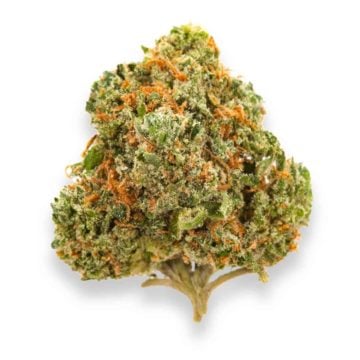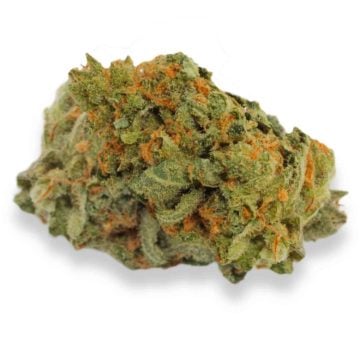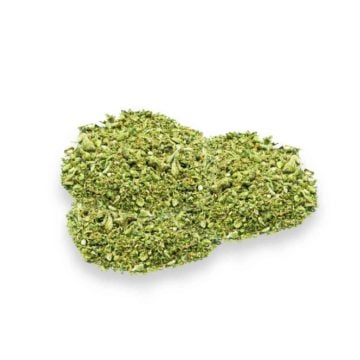
Opioids and Weed: A Comparative Analysis
In this content piece, we will delve into a comparative analysis of opioids and weed, exploring their effects, uses, risks, and potential benefits. By examining these substances from medical, social, and legal perspectives, we aim to provide a comprehensive overview of their impacts on individuals and society.
This post is intended as information and for general knowledge only. It is not a substitute for medical advice, diagnosis, or treatment. It is recommended that you talk to a healthcare professional about this before introducing cannabinoids into your daily routine (especially if you have been diagnosed with any medical conditions or are under any medication). It is not recommended to drive or operate any machinery when using cannabis- or hemp-derived products. Use responsibly!
Understanding Opioids
Definition and Types of Opioids
Opioids and weed, both substances that have garnered significant attention, reside on opposite ends of the medical and social spectrum. Opioids, a class of drugs that includes natural opioids derived from the opium poppy, synthetic opioids manufactured in laboratories, and semi-synthetic opioids which bridge the gap between natural and synthetic compounds, have long been utilized in medical settings. Natural opioids, such as morphine and codeine, are derived from the opium poppy plant and have been employed for centuries for their potent pain-relieving properties. Synthetic opioids, like fentanyl and methadone, are man-made compounds developed to mimic the effects of natural opioids. Semi-synthetic opioids, such as oxycodone and hydrocodone, are derived from natural opioids but are chemically modified to enhance their efficacy and potency.
Medical Uses of Opioids
One of the most crucial roles of opioids is pain management, especially in cases of chronic pain where alternative treatments may not provide adequate relief. Opioids are invaluable in treating acute pain resulting from surgeries or injuries. Moreover, opioids find their place in palliative care, providing comfort and improving the quality of life for individuals facing terminal illnesses.
Mechanism of Action
Opioids function by binding to specific receptors in the central nervous system, such as the mu, delta, and kappa receptors. Through this interaction, opioids modulate the perception of pain and exert a depressant effect on the central nervous system. This dual action not only alleviates pain but also contributes to the potential side effects and risks associated with opioid use, including respiratory depression and constipation.
Potential Benefits of Opioids
In cases of severe pain, opioids play an irreplaceable role. Individuals suffering from excruciating pain, such as post-operative patients or those with advanced cancer, often find relief through opioid medications. Despite the potential for misuse and addiction, opioids remain essential tools in pain management and palliative care.
Understanding Weed (Cannabis)
What is Cannabis
Shifting our focus to weed, or cannabis, we encounter a substance with a complex history. Cannabis comprises various strains, each possessing distinct compositions of cannabinoids, the compounds responsible for its effects. Two primary categories emerge: THC-dominant strains, characterized by high levels of tetrahydrocannabinol, the psychoactive cannabinoid, and CBD-dominant strains, which contain cannabidiol, a cannabinoid associated with therapeutic potential without inducing the “high” commonly associated with THC.
Historical and Cultural Context
Cannabis has traversed through time, serving diverse purposes in various cultures. Ancient civilizations integrated cannabis into their medical practices and religious ceremonies, recognizing its potential benefits. In modern times, societal attitudes have shifted, paving the way for emerging medical applications and challenging the stigma surrounding its use.
Effects on the Body and Mind
Short-term effects of cannabis encompass altered perception, mood shifts, and changes in cognitive function. These effects are primarily attributed to the interaction between cannabinoids and the endocannabinoid system, a complex network of receptors and neurotransmitters. On a long-term scale, concerns arise regarding cognitive development, particularly among young users, and potential mental health implications, though research is ongoing to elucidate these effects further.
Medicinal Applications
One of the most compelling reasons for cannabis’s resurgence in medical circles is its potential in pain relief. For individuals grappling with chronic pain and neuropathic conditions, cannabis offers an alternative approach to pain management. Additionally, cannabis has proven effective in reducing nausea among cancer patients undergoing chemotherapy, highlighting its potential in alleviating the side effects of conventional medical treatments.
Comparing Opioids and Weed
Pain Management Efficacy

In the realm of pain management, opioids and cannabis approach the challenge from different angles. Opioids target specific pain receptors in the brain and spinal cord, effectively reducing pain perception. In contrast, cannabis interacts with the endocannabinoid system, modulating pain responses and providing relief through a more holistic approach.
Potential for Dependence and Addiction
The risk of dependence and addiction is a pressing concern when discussing opioids and weed. Opioids present a higher risk due to their rapid onset of tolerance and the subsequent physical dependence that can develop. Cannabis, on the other hand, holds a lower risk of physical addiction but may lead to psychological dependence in certain individuals, especially those with a history of substance use disorders.
Side Effects and Health Risks
Both opioids and cannabis are not without their share of side effects and health risks. Opioids can induce respiratory depression, constipation, and in worst cases, overdose. Cannabis, when smoked, can irritate the lungs and impair cognitive function, particularly in high doses. Moreover, cannabis use has been linked to mental health concerns, although the relationship between cannabis and mental health is multifaceted and not fully understood.
Legal Status and Regulation
Legally, opioids and cannabis stand on opposite ends of the spectrum. Opioids are classified as controlled substances and are typically available only through prescription. In contrast, cannabis has seen a shifting legal landscape, with growing acceptance of both medical and recreational use in various regions. This contrast underscores the complex interplay between medical necessity, social perception, and legal frameworks.
Medical and Recreational Use
Medical Use of Opioids
Opioids find their primary medical application in cases of acute pain and palliative care. They are essential in post-surgery recovery, managingsevere injuries, and providing comfort to those in the final stages of life. However, the controlled administration of opioids is paramount to prevent misuse and addiction.
Medical Use of Cannabis
Cannabis’s medical use extends to treating conditions like chronic pain, epilepsy, and multiple sclerosis. Patients often share their positive experiences with cannabis, highlighting its effectiveness in managing symptoms and improving their quality of life.
Recreational Use of Opioids
Recreational opioid use, particularly in the form of illicit street drugs, poses grave dangers. The risk of overdose, contaminated substances, and legal repercussions underscores the importance of comprehensive drug education and harm reduction measures.
Recreational Use of Cannabis
Societal attitudes toward recreational cannabis have evolved over time, shedding the perception of cannabis as a “gateway drug.” Responsible use, informed by harm reduction principles, is becoming the focal point of conversations around recreational cannabis consumption.
Societal and Legal Considerations
Opioid Crisis and Public Health
The opioid crisis has cast a shadow over public health, marked by increasing opioid-related deaths and addiction rates. Contributing factors range from overprescription to the availability of street opioids. Public health responses encompass distribution of naloxone, a medication that can reverse opioid overdoses, and addiction treatment programs designed to address opioid use disorder.
Cannabis Legalization and Public Perception
Cannabis legalization is indicative of shifting public perceptions and attitudes. The move toward decriminalization and legalization on a global scale is challenging the traditional notion of cannabis as a harmful substance. The transition from a “gateway drug” narrative to recognizing its potential as a medical resource highlights the evolution of public opinion.
Government Interventions and Policies
Governments are responding to the opioid crisis through various interventions. Prescription monitoring programs aim to curb excessive opioid prescribing, while approaches that minimize opioid use are being explored. In the realm of cannabis, regulatory models are being developed, encompassing taxation, age restrictions, and quality control to ensure safe consumption.
Harm Reduction and Treatment
Opioid Harm Reduction Strategies
In combating the opioid crisis, harm reduction strategies are crucial. Naloxone distribution programs provide individuals with the tools to reverse opioid overdoses. Safe injection sites offer controlled environments for drug use, reducing the risk of overdose and associated harms.
Cannabis Use Disorder Treatment
For those struggling with cannabis use disorder, treatment options are available. Identification and assessment are fundamental steps in recognizing problematic cannabis use. Behavioral therapies, such as cognitive-behavioral therapy and motivational enhancement, offer effective approaches to managing this disorder.
Public Health Approaches
Public health efforts revolve around responsible use education and harm reduction campaigns. Striking a balance between individual autonomy and public well-being is essential in minimizing the negative consequences of both opioids and cannabis.
Conclusion
By examining opioids and weed in depth, we have gained insights into their distinct characteristics, effects, and societal implications. Both substances come with their own sets of risks and benefits, underscoring the importance of informed decisions, responsible use, and comprehensive public policies to address potential harms and ensure individual and societal well-being. This understanding can guide individuals, healthcare professionals, and policymakers toward making well-informed choices regarding these substances.
Also Interesting:















